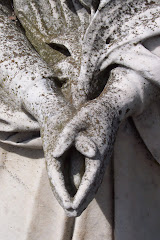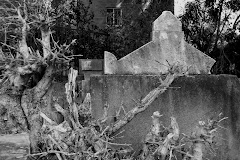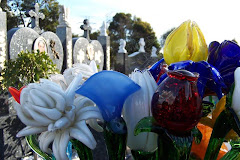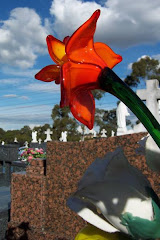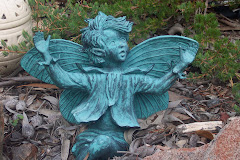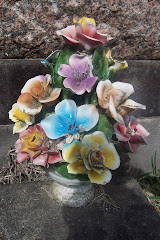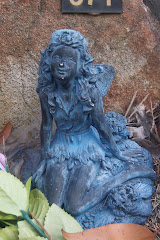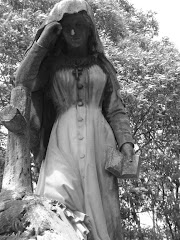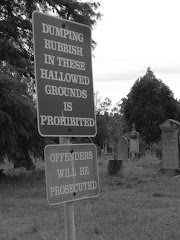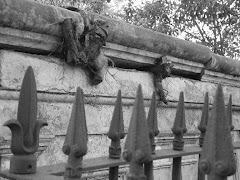After visiting Castlebrook Memorial Gardens Cemetery I did a search for cemeteries in the local area on my GPS. It is rather difficult to get a good list of all the cemeteries in Sydney, they are not particularly well indexed, so this is one way to find those small, out of the way places. This place was rather odd. In between huge the M4 and the Great Western Motorway it is shadowed by huge electricity towers. There is no real parking area, I had to turn off into a small drive way and walk up the hill to the church which is surrounded by large fencing and off-putting signs.
Searching the internet for information turned up this rather interesting link to Ghost Tours of the Cemetery. One happy customer reported: "t was a very cold night and i was freezing and shaking and then the tour guide asked me to sit on one of the graves and i stopped shivering and it suddenly wasn't cold anymore!"
Historical Information
"The Early Days..
 It was from the top of Prospect Hill that Captain Watkin Tench first saw the Blue Mountains in 1789.
It was from the top of Prospect Hill that Captain Watkin Tench first saw the Blue Mountains in 1789. In 1791 Governor Phillip settled 12 families on small farms around the base of the Hill. These and later settlers were part of the Parish of St John's Church at Parramatta.
During the 1830s attempts were made to have an Anglican Church built at Prospect to serve the areas of Seven Hills and Prospect.
In 1838 William Lawson, resident at Veteran Hall Prospect, called for tenders to build the church. Prominent and local people had subscribed £376/3/- (approx. $750).
The Sydney Morning Herald of Saturday April 17 1841 reported that "On Wednesday last the Bishop of Australia laid the foundation of a Parochial Church at Prospect."
The Rev H H Bobart was appointed and performed the first services. The first baptism was of Margaret Goodin on May 2. 1841, the first marriage was of Thomas Moreing to Sarah McDonald on November 23 1841 and the first burial was of Ann Goodin, aged 15, on July 18 1841.
The church operated until the end of 1967 when it was closed due to increasing vandalism.
On Saturday November 4 1989 a fire gutted the church, destroying the roof and many of the interior fittings, including the organ and furniture.
The Interior...
The church is a plain spacious building comprising a nave chancel and vestry. The tower at the western end had a bell, which was rung from inside the porch. The font, a large shallow bowl on a stone column and base, stood on a slightly raised platform at the back of the church on the left. Six very large kerosene lamps were suspended from the ceiling and there were small wall lamps on the eastern end. A number of marble memorial tablets were on the walls. High box pews provided the seating on the north and south sides, with low backed pews with kneelers in the centre. A hand pumped pipe organ stood at the right hand side. The large windows were of clear glass bordered all around by coloured glass about 13 cm wide.During 1881-1889 renovations were made and the wooden ceiling was replaced by a metal one, in memory of Robert Crawford. Other memorial gifts included a reading desk, pulpit, new communion rail and handsome font cover.
